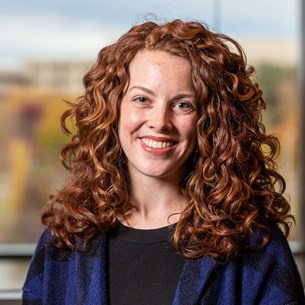Meeting
2018 ASCO Quality Care Symposium

University of Alabama at Birmingham, Birmingham, AL
Courtney Williams, Kelly Kenzik, Maria Pisu, Stacey A. Ingram, Aidan Gilbert, Rodney Paul Rocconi, Gabrielle Betty Rocque
Background: Healthcare reimbursement changes are contributing to increased closures of community hospitals and oncology practices, which may lead cancer patients to travel greater distances for care. Limited data exists on the impact of travel time on hospitalization rates and patient cost responsibility by phase of care for older cancer patients. Methods: This was a secondary analysis of Medicare claims from 2012-2015 for cancer patients age ≥65 receiving care in the University of Alabama at Birmingham Cancer Community Network. Patient addresses were obtained from network data, hospitalizations from inpatient claims, and patient cost responsibility from inpatient, outpatient, skilled nursing facility, carrier, and durable medical equipment claims. Drive time was calculated from patient home to cancer care site (CCS). Phase of care-specific (initial, survivorship, end-of-life [EOL]) rates of hospitalizations overall and by CCS vs. other care site (OCS) were calculated per 100 person-years. Hierarchical linear models compared average monthly phase-specific costs by drive time to CCS. Results: Of 23,605 older cancer patients, median drive time to CCS was 32 minutes (IQR 18-59), with 24% driving ≥1 hour to CCS. Rates of hospitalizations by initial (n = 14,225), survivorship (n = 18,805), and EOL (n = 8,211) phases of care were 54, 26, and 301 per 100 person-years, respectively. Higher rates of hospitalizations at OCS vs. CCS were shown for patients traveling ≥1 hour to CCS (initial, survivorship, and EOL rate of 41 vs. 20, 21 vs. 6, and 220 vs. 95 per 100 person-years, respectively). Median monthly costs by phase were $401 (IQR $182-$814) for initial, $369 (IQR $123-$1046) for survivorship, and $2075 (IQR $1123-$3723) for EOL. Patients traveling ≥1 hour to their CCS had higher cost responsibility, with patients in initial, survivorship, and EOL phases having $303 (95% CI $130-$476), $75 (95% CI $46-$105), and $736 (95% CI $308-$1164) higher average costs per month than those traveling < 1 hour, respectively. Conclusions: Cancer patients traveling further to receive care are potentially vulnerable to higher cost responsibility and limited access to care if community hospitals close, especially at EOL.
Disclaimer
This material on this page is ©2024 American Society of Clinical Oncology, all rights reserved. Licensing available upon request. For more information, please contact licensing@asco.org
2018 ASCO Quality Care Symposium
Rapid Oral Abstract Session
Rapid Abstract Session B
Big Data Studies,Projects Relating to Equity, Value and Policy,Projects Relating to Patient Experience,Projects Relating to Safety,Technology and Innovation in Quality of Care
Measuring Value and Costs
J Clin Oncol 36, 2018 (suppl 30; abstr 37)
10.1200/JCO.2018.36.30_suppl.37
37
Abstract Disclosures
2021 ASCO Quality Care Symposium
First Author: Laura Donovan
2023 ASCO Annual Meeting
First Author: Changchuan Jiang
2023 ASCO Quality Care Symposium
First Author: Alexandra G. Peluso
2023 ASCO Annual Meeting
First Author: Marissa LoCastro